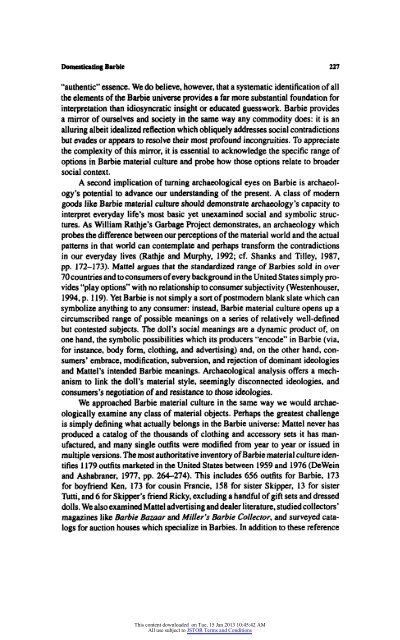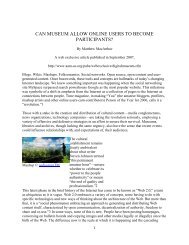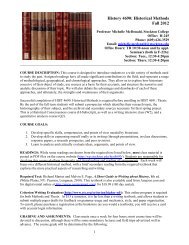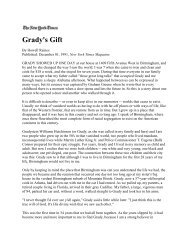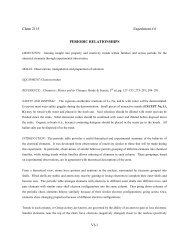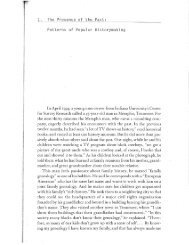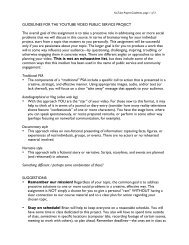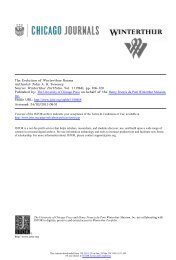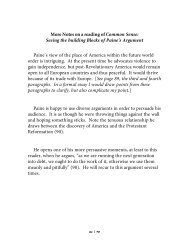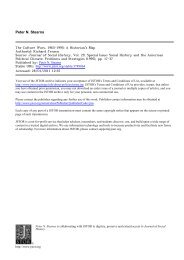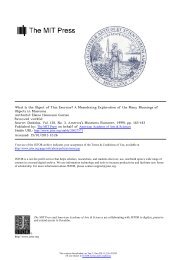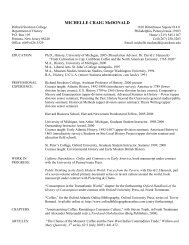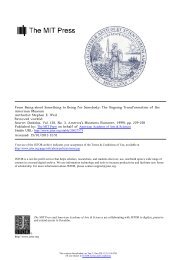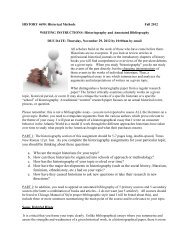Domesticating Barbie - Richard Stockton College Word Press ...
Domesticating Barbie - Richard Stockton College Word Press ...
Domesticating Barbie - Richard Stockton College Word Press ...
You also want an ePaper? Increase the reach of your titles
YUMPU automatically turns print PDFs into web optimized ePapers that Google loves.
<strong>Domesticating</strong> <strong>Barbie</strong> 227<br />
"authentic" essence. We do believe, however, that a systematic identification of all<br />
the elements of the <strong>Barbie</strong> universe provides a far more substantial foundation for<br />
interpretation than idiosyncratic insight or educated guesswork. <strong>Barbie</strong> provides<br />
a mirror of ourselves and society in the same way any commodity does: it is an<br />
alluring albeit idealized reflection which obliquely addresses social contradictions<br />
but evades or appears to resolve their most profound incongruities. To appreciate<br />
the complexity of this mirror, it is essential to acknowledge the specific range of<br />
options in <strong>Barbie</strong> material culture and probe how those options relate to broader<br />
social context.<br />
A second implication of turning archaeological eyes on <strong>Barbie</strong> is archaeol<br />
ogy's potential to advance our understanding of the present. A class of modern<br />
goods like <strong>Barbie</strong> material culture should demonstrate archaeology's capacity to<br />
interpret everyday life's most basic yet unexamined social and symbolic struc<br />
tures. As William Rathje's Garbage Project demonstrates, an archaeology which<br />
probes the difference between our perceptions of the material world and the actual<br />
patterns in that world can contemplate and perhaps transform the contradictions<br />
in our everyday lives (Rathje and Murphy, 1992; cf. Shanks and Tilley, 1987,<br />
pp. 172-173). Mattel argues that the standardized range of <strong>Barbie</strong>s sold in over<br />
70 countries and to consumers of every background in the United States simply pro<br />
vides "play options" with no relationship to consumer subjectivity (Westenhouser,<br />
1994, p. 119). Yet <strong>Barbie</strong> is not simply a sort of postmodern blank slate which can<br />
symbolize anything to any consumer: instead, <strong>Barbie</strong> material culture opens up a<br />
circumscribed range of possible meanings on a series of relatively well-defined<br />
but contested subjects. The doll's social meanings are a dynamic product of, on<br />
one hand, the symbolic possibilities which its producers "encode" in <strong>Barbie</strong> (via,<br />
for instance, body form, clothing, and advertising) and, on the other hand, con<br />
sumers' embrace, modification, subversion, and rejection of dominant ideologies<br />
and Mattel's intended <strong>Barbie</strong> meanings. Archaeological analysis offers a mech<br />
anism to link the doll's material style, seemingly disconnected ideologies, and<br />
consumers's negotiation of and resistance to those ideologies.<br />
We approached <strong>Barbie</strong> material culture in the same way we would archae<br />
ologically examine any class of material objects. Perhaps the greatest challenge<br />
is simply defining what actually belongs in the <strong>Barbie</strong> universe: Mattel never has<br />
produced a catalog of the thousands of clothing and accessory sets it has man<br />
ufactured, and many single outfits were modified from year to year or issued in<br />
of <strong>Barbie</strong> material culture iden<br />
multiple versions. The most authoritative inventory<br />
tifies 1179 outfits marketed in the United States between 1959 and 1976 (DeWein<br />
and Ashabraner, 1977, pp. 264-274). This includes 656 outfits for <strong>Barbie</strong>, 173<br />
for boyfriend Ken, 173 for cousin Francie, 158 for sister Skipper, 13 for sister<br />
Tutti, and 6 for Skipper's friend<br />
Ricky, excluding a handful of gift sets and dressed<br />
dolls. We also examined Mattel advertising and dealer literature, studied collectors'<br />
magazines like <strong>Barbie</strong> Bazaar and Miller's <strong>Barbie</strong> Collector, and surveyed cata<br />
logs for auction houses which specialize in <strong>Barbie</strong>s. In addition to these reference<br />
This content downloaded on Tue, 15 Jan 2013 10:45:42 AM<br />
All use subject to JSTOR Terms and Conditions


